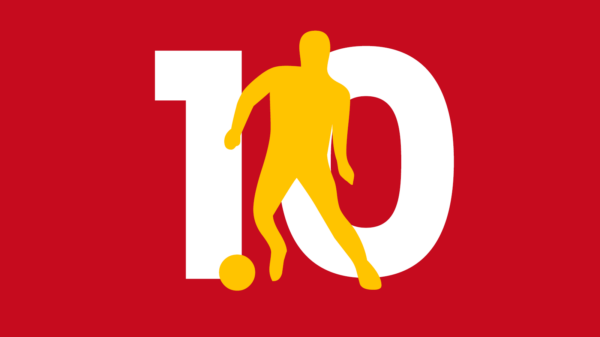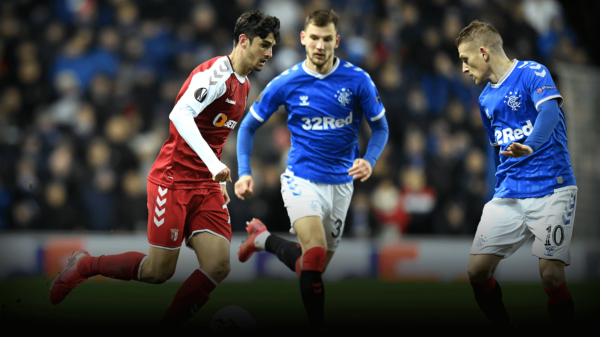Abel Resino left Celta Vigo with the remit of his four months in charge complete— to avoid relegation. The Galicia club avoided the drop by just one point on the final day after the 53 year old Resino came in as a fire-fighter, with Celta third from bottom upon the departure of Paco Herrera back in February. Resino was very much a short term choice, a stop-gap to lead the team to safety so President Carlos Mourino could implement a long-term vision that will be spearheaded by Luis Enrique, returning to La Liga after an ill-fated spell with Roma.
Enrique is definitely a coach with a vision, having led Barcelona B back to the Liga Adelante after an 11 year absence following his succession of Josep Guardiola, Enrique took his talented La Masia crop to the play-offs but were denied access to La Liga because of league rules. It was this achievement that convinced Roma and their Sporting Director Walter Sabitini to appoint him at the Stadio Olimpico in the summer of 2011.
“Enrique represents an idea of football that we would like to follow, which imposes itself through Spain and Barcelona” said Sabitini upon his appointment, “I was looking for someone outside of Italian football, uncontaminated”. The belief that he would take with him to Rome some of the philosophies that were ingrained in Catalonia with Guardiola’s all-conquering juggernaut was clear, here was a manager with the ambition, exuberance and the required innovation to restore a stuttering Roma to success.
Unfortunately for Luis Enrique, his Italian tale didn’t quite follow that script. It is Rome where an insular reputation for failure to accept change has often thrived and the bright new manager, embarking on his first high-profile job, could have been accused for failing to appreciate what a gargantuan job lay in wait.
A focus on possession and fluid football was enforced and was being slowly embraced by some sections of support, but only alongside a sequence of poor results and the squad ill-discipline that saw Daniel Osvaldo strike Erik Lamela across the head in Udinese, or three red-cards in a dreadful evening in Fiorentina. The ex-Barcelona winger couldn’t settle on his starting line-up and eventually finished seventh, outside of the European qualification places to which the majority of Roma fans got their wish. Luis Enrique resigned at the end of the season, a banner reading “if you’re a real man Luis then leave now” appeared four matches before the conclusion of the troubled campaign.
With half of his two year deal remaining, Roma desperately wanted Enrique to see his job through however, with Technical Director Franco Baldini constantly reiterating his stance that the Spaniard would not be removed from his position whilst it was believed the owner, Thomas Di Benedetto, refused to even contemplate a overhaul. Though with the notoriously high-pressure setting of the Stadio Olimpico compromising his aim to edge out the ageing Francesco Totti in favour of the new generation of Stefano Okaka, Gianluca Cipriani and Bojan Krkic, the long-term picture always seemed to be out of reach. Pressure grew from the media as the immediate results were poor, the likes of Danielle De Rossi were fined heavily for missing training and it seemed team ethic was disappearing. Enrique had little option but to throw in the towel on his Italian venture.
At Celta Vigo, Luis Enrique is likely to enjoy significantly less media scrutiny than he did at the Giallorossi and he is back in a league which he is extremely familiar with. Not only that, but he is not tasked with changing the identity of a whole club whilst also having to ensure results. The new manager has said he “fully identifies with the club’s philosophy” and that he wants Celta to “maintain the same values that have characterised it in recent years, and that is about playing good football”.
With the Celestes having finished 17th , there is little doubt that in a position of lower expectation, Enrique will be afforded more patience as he tries to build a legacy of the adventurous, cohesive attacking football he preached in the youth set-up at Barcelona, in a team with clear potential. It was in his unveiling that Luis Enrique took the opportunity to say his objective was to “play good football in keeping with the reputation of the club”
It was a clear Barcelona-influenced system that was in effect, a 4-3-2-1 system that shifted into a 4-3-3 with Fernando Gago and Miralem Pjanic (De Rossi behind them playing the Busquets role) as two measured passers in midfield who sought to control the game. That they managed, with an average of 58% possession over the course of the campaign, but they failed to convert that dominance into enough goals. Sometimes, some conviction shone through all the discontent and turbulence, a 5-1 thrashing of Cesena in which Roma enjoyed 72% of the ball, as well as comfortable victories over Chievo or Fiorentina in the Coppa Italia being cases in point, but such performances were sporadic.
It is the flexible 4-2-3-1 that was in effect at Celta this season so Luis Enrique will not have to alter too much in the way of system; in Borja Oubina and Alex Lopez he has two comfortable centre-midfielders, intense pressers off the ball. While speed and creativity on the wings is provided by Augusto Fernandez and Michael Krohn-Dehli. Goals were a huge problem for them last term with just 35 being scored, though with Enrique’s focus on ball retention and incisive build-up, that may change in the forthcoming year.
Last season’s top-scorer, the 12 goal Iago Aspas, seems to be departing to Liverpool and former captain Roberto Lago has left for Getafe, but Enrique has already been linked with Barcelona B’s play-maker Rafinha Alcantara, Roma’s left-back Jose Angel and Brondby’s Jens Stryger Larsen as potential targets.
Though the 43 year old has identified that he will make full use of the club’s youth set-up, picking out 17 year old goalkeeper Ruben Blanco and Levy Midanda, the 21 year old midfielder, as two players who would be afforded more first-team opportunities next season. “Developing players is exciting” said Enrique, “Celta has been working on this aspect for years-you can see the infrastructure and things they have been doing well”. In the less-pressurised setting of the Balaidos, Luis Enrique is expected to be given time to fully utilise such facilities. “I am going to fit perfectly into Celta’s philosophy” added Enrique, a bold premonition and an indication of how much trust he has in the club supplying a platform for his ambitions.
At Roma, Enrique was faced with changing the philosophy of a club along with overseeing a transition from the years of Luciano Spaletti. Patience and time were commodities that were not given to him although the club believed he was worth the trouble. In this less volatile setting on the bay of the Atlantic Ocean in north west Spain, Enrique’s Barcelona-bred vision will be translated into professional management. Lessons will be learned from his experiment out in Serie A, but Vigo are a much different club than Roma. Different club, same young, talented Enrique with the perfect opportunity to prove himself.
I am not afraid of the exchange of views and broadening my knowledge by listening to others, so if you would like to comment or get in touch, my email is AdamGray15@hotmail.com.
- Spanish Football Column: Death of Deportivo supporter blights the weekend’s action - December 1, 2014
- Spanish Football Column: Levante work hard to improve, Espanyol disappoint, Messi breaks another record - November 26, 2014
- Spanish Column: Nolito finally getting recognition while Sociedad get Moyes - November 12, 2014



























































